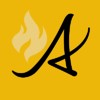
The wildfire danger across the Rocky Mountain House Forest Area is currently LOW. This means that fire can still ignite but is not expected to spread to deeper vegetation layers or larger fuels, such as trees.
If you see smoke or flame and suspect that it is a wildfire, please call 310-FIRE.

This photo captures snow on a mountaintop in the Rocky Mountain House Forest Area, which is typical for this time of year (and even earlier) in some mountain ranges. However, this snow is unlikely to remain due to the forecasted high temperatures.
Some parts of the forest area may continue to see precipitation for the rest of today. However, as we move into the weekend and next week, weather conditions are expected to improve, with daytime temperatures forecasted to be above seasonal averages. This shift in weather, combined with fine fuels like grass, leaves, and other vegetation continuing to dry out, is likely to increase the risk of wildfires as more fuel becomes available. Please continue to use caution when recreating or working outdoors, as everyone plays an important role in preventing human-caused wildfires.
ROCKY MOUNTAIN HOUSE FOREST AREA WILDFIRE UPDATE
Since January 1, 2024 there have been 81 wildfires in the Rocky Mountain House Forest Area, which have burned 11,517.66 hectares.
There are three active wildfires in the Rocky Mountain House Forest Area, and all are currently classified as under control.
For the most up-to-date wildfire information, visit the Alberta Wildfire Status Dashboard.
DO YOUR PART TO PREVENT WILDFIRES
On average, 67% of wildfires in Alberta are human-caused. To help prevent wildfires this fall, please follow these guidelines:
Farming: Regularly inspect your machines and clear any debris and vegetation from around hot spots. This practice helps prevent wildfires caused by overheated debris. Keeping your machinery well-maintained also reduces the risk of sparks igniting dry vegetation. Always carry firefighting equipment, including a shovel, fire extinguisher, and bucket, on your farming equipment.
Camping: Keep your campfires small, safe, and always attended. Before leaving your campsite or going to bed, ensure your campfire is completely extinguished. Soak the fire with water, stir the ashes, and soak it again to make sure it’s out. The fire is fully extinguished when you can no longer feel any heat from the ashes.
Off-Highway Vehicle Users: Stop frequently to clear any debris from your machine, as materials like grass, moss, or muskeg can smolder and drop to the ground, potentially sparking a wildfire. Always carry firefighting equipment, such as a shovel, fire extinguisher, and bucket, while riding.
Hunting: While campfires are a traditional part of the hunting experience, it’s essential to use caution. Build your campfires in safe areas, away from flammable materials like grass, twigs, and leaves. Always extinguish your campfire when you are done.

FARM & ACREAGE WILDFIRE PREVENTION
Fall is a busy time of year in the farming community, with completing the harvest and getting the last of the bales hauled in before the snow. Wildfire is probably the last thing on your mind, but with a little planning in the fall you can reduce the threat of wildfire for the coming winter and spring.
Cured or dry grass can be hazardous not just in the spring, but in late fall and winter as well. Under the right weather conditions, with high winds and no snow cover, grass fires in the later fall and winter can spread quickly and threaten your home and property.
Mowing your grass in the fall is a good way to help prevent the spread of wildfire. Studies and field tests have proven fall mowing to be an effective fire break, slowing the spread of wildfire and giving firefighters a chance to contain the fire. Mowing grass short in the fall will put you ahead of the game in the spring!
For more details on simple yet effective actions to reduce wildfire risk, refer to the Farm and Acreage FireSmart publication.

FIRE PERMITS ARE REQUIRED
Until October 31, all burning activities in the Forest Protection Area, excluding campfires, require a fire permit. Fire permits ensure safe burning practices and allow staff to know where burning is approved so firefighters and aircraft are free to fight wildfires. Your municipality may have its own rules and restrictions in place. Contact them for further details.
Fire permits are free and can be requested online or by calling the Rocky Mountain House Forest Area at 403-845-8250.
Once you have a permit, be sure to follow these safe burning practices:
- Never leaving your fire unattended.
- Only burn what you can control and follow the conditions of your permit.
- Have your fire permit ready to present if requested.
- Watch for sparks and burning material that may result in smaller fires. Larger fires can send these sparks over several kilometres, especially when burning in the wind.
- If the wind is gusting over 15 km/hour or increases beyond the limit on your permit, immediately extinguish your fire.
- Have the tools and equipment listed in your permit available to put out any spot fires that may occur.
ALBERTA WILDFIRE APP
The Alberta Wildfire Status App is a great way to stay informed about wildfire information in Alberta. Download the app today (for Apple or Android) to have instant access to information on wildfire locations and sizes, fire ban information, conditions in your local forest area and directions on how to report a wildfire.
